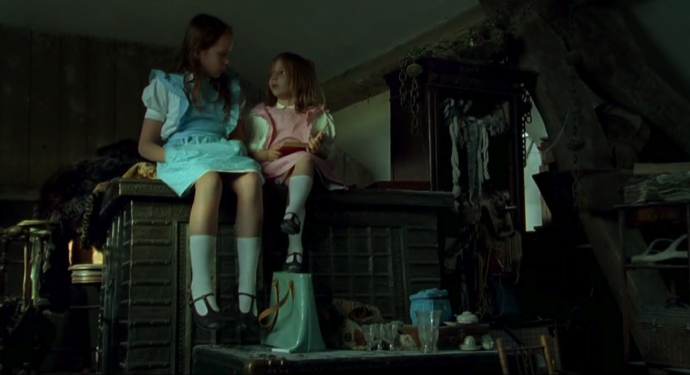Dec 30, 2010 2
The Cynephile’s Top Ten Movies of 2010
So here’s my offering of films that knocked me out this year — not a complete list, nor something that follows any sort of rigid selection rules. I’ve omitted repertory screenings so that the list is roughly contemporary (though some may have been theatrically released in Europe in 2009). But we will not split hairs here, shall we? Years come and go, but great movies are hard to find. Onward!
1. DOGTOOTH. An authoritarian father virtually isolates his children from the rest of the world and puts a chokehold on the media. Sound like any totalitarian regimes today? Through this surreal and sickly comic film, Yorgos Lanthimoss produces possibly one of the greatest, most fucked-up allegories about control versus freedom ever.
2. EXIT THROUGH THE GIFT SHOP. If this street art “documentary” is a Banksy prank, it’s a pretty damn good one. Plus, I am still humming this. Carry on Mr. Brainwash, whoever you may be.
3. VINCERE. An epic and wholly original masterpiece from one of Italy’s most underappreciated filmmakers. Bellocchio presents a winning take on Mussolini (the man turned icon) through uncovering the family we never knew he had. Giovanna Mezzogiorno doesn’t hurt either.
4. I AM LOVE. Could Tilda Swinton be any more captivating in this movie? Could the mise-en-scène be any more gorgeous? Could the score be any more majestic? And where can I order some of those prawns? Though I wrestled with some of its over-the-top moments, sequences from this film stayed with me for days, as did the music. I gave in.
5. ALAMAR. An exquisite, almost wordless portrait of the bond between a father and son while they cling to methods of the old world. Truly unique and unlike any film I’ve seen before in its approach to many nuanced subjects, this film “speaks†in gestures and is the closest thing to a child’s handprint in clay.
6. RUHR. James Benning makes an avant-garde film about trains, and it feels like the fulfillment of the apocalypse. Only he could make something that feels so simultaneously gritty and mystical.
7. THE GHOST WRITER. An taut thriller that needed nothing more than old-fashioned political intrigue and a more-than-competent cast to summon up some excellent suspense. I wish more mainstream films were as good as this one.
8. LAST TRAIN HOME. This documentary is about more than the annual Chinese New Year migration; it’s about a daughter breaking away from her parents. Both experiences feel harrowing and very real in this film.
9. PLEASE GIVE. This very New York, very funny movie reminded me of early Woody Allen.
The humor is wry, but the film has its touching moments too, not to mention a super ensemble cast. I wish more “quirky mainstream†or “mainstream indie†(mindie?) films were like this.
10. BLUEBEARD. It’s fascinating to see Breillat explore the twinned axes of the fairy tales and childhood to explore the formation of the gender roles and processes of sexualization that have always fascinated her. (That’s my girl’s school education showing, sorry.) She also wins for best final film shot of the year.
Runners-up: Film Socialisme, White Material, A Prophet, The Father of My Children, Mother,
Around a Small Mountain, 12th and Delaware, Henri-Georges Clouzot’s Inferno, Erie, The Silent Holy Stones.
Notably Absent: The Social Network, Inception
